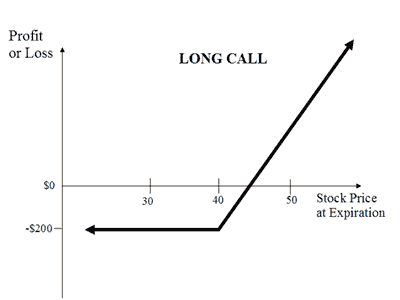Stock Repair Strategy Explained
Post on: 25 Июль, 2015 No Comment

The stock repair strategy is used as an alternative strategy to recover from a loss after a long stock position has suffered from a drop in the stock price.
Sell 2 OTM Calls
The most straightforward way to try to rescue a losing long stock position is to hold on to the shares and hope that the stock price return to the original purchase price. However, this approach may take a long time (if ever).
To increase the likelihood of achieving breakeven, another common strategy is to double down and reduce the average purchase price. This method reduces the breakeven price but there is a need to pump in additional funds, hence increasing downside risk.
The stock repair strategy, on the other hand, is able to reduce the breakeven at virtually no cost and with no additional downside risk. The only downside to this strategy is that the best it can do is to breakeven. This means that in the event that the stock rebounds sharply, the trader does not stand to make any additional profit.
Example
Suppose a trader had bought 100 shares of XYZ stock at $50 a share in May but the price of the stock had since declined to $40 a month later, leaving him with a paper loss of $1000. The trader decides to employ a stock repair strategy by implementing a 2:1 ratio call spread, buying a JUL 40 call for $200 and selling two JUL 45 calls for $100 each. The net debit/credit taken to enter the spread is zero.
On expiration in July, if XYZ stock is trading at $45, both the JUL 45 calls expire worthless while the long JUL 40 call expires in the money with $500 in intrinsic value. Selling or exercising this long call will give the options trader a profit of $500. As his long stock position has also regained $500 in value, his total gain comes to $1000 which is equal to his initial loss from the long stock position. Hence, he have achieved breakeven at the reduced price of $45 and ‘repaired’ his stock.
If XYZ stock rebounded strongly and is trading at $60 on expiration in July, all the call options will expire in the money but as the trader has sold more call options than he has purchased, he will need to buy back the written calls at a loss. Each JUL 45 call written is now worth $1500 but his long JUL 40 call is only worth $2000 and is not enough to offset the losses from the written calls. This means that the trader has suffered a loss of $1000 from the call ratio spread but this loss is offset by the $2000 gain from his long stock position, resulting in a net ‘profit’ of $1000 — the amount of his initial loss before the stock repair move. Hence, with the stock price at $60, the trader still only achieved breakeven.
However, there is no additional downside risk to this repair strategy and losses from a further drop in stock price will be no different from the losses suffered if the trader had simply held on to the shares. If the stock price had dropped to $30 or below at expiration, then all the options involved will expire worthless and so there will be no additional loss from the call ratio spread. However, the long stock position will still take on a further loss of $1000.
Note: While we have covered the use of this strategy with reference to stock options, the stock repair strategy is equally applicable using ETF options, index options as well as options on futures .
Commissions
For ease of understanding, the calculations depicted in the above examples did not take into account commission charges as they are relatively small amounts (typically around $10 to $20) and varies across option brokerages .
However, for active traders, commissions can eat up a sizable portion of their profits in the long run. If you trade options actively, it is wise to look for a low commissions broker. Traders who trade large number of contracts in each trade should check out OptionsHouse.com as they offer a low fee of only $0.15 per contract (+$8.95 per trade).
Your new trading account is immediately funded with $5,000 of virtual money which you can use to test out your trading strategies using OptionHouse’s virtual trading platform without risking hard-earned money.
Once you start trading for real, your first 150 trades will be commission-free! (Make sure you click thru the link below and quote the promo code ’90FREE’ during sign-up)














